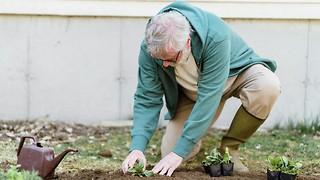Biography: Philip Larkin: Life, Art and Love
Alice Chilcott argues this portrayal of a complex poet goes beyond biography and reminds us of the poetic nature of life itself

Philip Larkin was born in 1922. He attended St John’s College, Oxford during the war, narrowly avoiding conscription due to his bad eyesight. His first book of poetry was published in 1945, and he was offered the Laureateship in 1984. He turned it down, and died the following year at the age of 63. He left no wife or children.
This much a Google search can tell us about someone like Larkin, and one might be forgiven for asking what the point is in taking it further. Writing about writers is a very strange thing to do. But it is also a particularly important thing to do in the case of Larkin, whose self-cultivated image of complete emptiness and dissatisfaction with life has endured and distorted in the three decades since his death. In his (not so) new biography of the writer, Philip Larkin: Life, Art and Love, James Booth sets out a new version of Philip Larkin, as a man who felt too much for life, rather than too little.
Booth rightly and consistently challenges the dysfunction in our cultural imagination between the poet capable of the compassion of “Love Songs in Age”, and the misogynist, racist librarian who clung obstinately to life on the sidelines, in the fishy suburbs of Kingston-upon-Hull. He shows us Larkin struggling to reign in strong feelings for the *many* women in his life, Larkin crying over the death of a hedgehog
What Booth does not do is to beatify him. Some of Larkin’s best quotes do derive their humour and potency simply from being so bloody-minded, so brutally opposed to the values enshrined by society as a whole. We get his views on religion (“It’s absolutely bloody amazing to think that anyone ever believed any of that”), while his occasional racist outbursts are not glossed over. Larkin the man is shown to be as complex as his poetry; some of the most beautiful and tender lines of his oeuvre only function as such when lifted out of their subversive and ironic contexts: “What will survive of us is love.”
Booth’s analysis of Larkin’s poetry is perceptive and creative without ever being tenuous. He respects its integrity, and never commits the biographer’s cardinal sin of cramming the poet’s sprawling, troubled, misshapen life between the delicate lines of his verse. Rather than Larkin’s life being used to inform the poetry, the poetry is used alongside letters, interviews, and some rather hilarious pornography samples to develop a sort of criticism of life. But Booth continually reminds us that the poet-Larkin and the man-Larkin are not always the same: the man who penned “This Be The Verse” wrote to his mother twice a week for 25 years.
What makes this book so special, however, is that for all its debate and scrupulous attention to detail, Larkin’s life story reads like a novel. Life, Art and Love moves with all the deftness and fluidity of a Virginia Woolf essay; Booth has a taste for the sentimental and macabre which, one imagines, Larkin himself would have appreciated. The arc of Larkin’s life, from cocksure college student to romantically confused librarian to lumbering, overweight old man is beautifully drawn. Booth shows us that life can be poetic, too. The last chapter is no less tear-jerking for being totally unimagined.
Larkin is important to society because he produced poetry. But poetry is important because it reveals the person, and that is exactly what Booth’s book reminds us of.
 News / Gov declares £31m bus investment for Cambridge8 December 2025
News / Gov declares £31m bus investment for Cambridge8 December 2025 News / Uni redundancy consultation ‘falls short of legal duties’, unions say6 December 2025
News / Uni redundancy consultation ‘falls short of legal duties’, unions say6 December 2025 News / Pembroke to convert listed office building into accom9 December 2025
News / Pembroke to convert listed office building into accom9 December 2025 Science / Fancy doing research this summer? A guide to getting involved as a student8 December 2025
Science / Fancy doing research this summer? A guide to getting involved as a student8 December 2025 News / Write for Varsity this Lent3 December 2025
News / Write for Varsity this Lent3 December 2025









